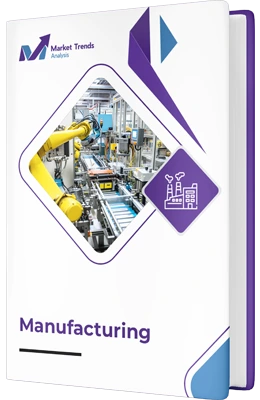
The 3D Printing in Automotive Market size was valued at USD 2.5 Billion in 2024 and is projected to reach USD 8.7 Billion by 2033, growing at a Compound Annual Growth Rate (CAGR) of 16.2% from 2025 to 2033. This rapid expansion reflects the automotive industry's increasing adoption of additive manufacturing for lightweight components, rapid prototyping, and customized parts, driven by technological advancements and evolving consumer demands. The integration of 3D printing into automotive supply chains is transforming traditional manufacturing paradigms, enabling shorter lead times and enhanced design flexibility. As regulatory standards tighten around sustainability and safety, the market's growth trajectory is poised to accelerate further, supported by innovations in materials and digital manufacturing ecosystems.
3D Printing in Automotive refers to the application of additive manufacturing technologies to design, produce, and optimize vehicle components and parts. This process involves building objects layer-by-layer from digital models using materials such as thermoplastics, metals, and composites. Automotive 3D printing enables rapid prototyping, low-volume production, and complex geometries that are difficult to achieve with traditional manufacturing methods. It plays a crucial role in reducing weight, enhancing performance, and customizing vehicles to meet specific consumer and industry requirements. As a strategic innovation, 3D printing is increasingly integrated into automotive R&D, manufacturing, and after-sales services to drive efficiency and innovation.
The automotive 3D printing landscape is characterized by rapid technological evolution and strategic industry shifts. Increasing adoption of lightweight materials and complex geometries is enabling automakers to improve vehicle efficiency and safety. The integration of Industry 4.0 principles, including digital twins and smart factories, is enhancing production agility. Collaborative innovation between OEMs and 3D printing service providers is fostering industry-specific solutions. Furthermore, sustainability initiatives are promoting the use of recyclable and bio-based materials in additive manufacturing processes. The rise of on-demand manufacturing and localized production hubs is reshaping global supply chains.
The primary drivers propelling the growth of 3D printing in the automotive sector include technological advancements that enable high-precision manufacturing, cost reductions in prototyping, and the demand for lightweight, fuel-efficient vehicles. Regulatory pressures for emissions reduction and safety enhancements are incentivizing automakers to adopt innovative manufacturing solutions. The need for rapid product development cycles and customization options is also fueling market expansion. Additionally, the increasing availability of industrial-grade 3D printers and materials tailored for automotive applications is facilitating broader adoption across the industry. Strategic investments by automotive giants in additive manufacturing R&D further accelerate this trend.
Despite its promising outlook, the 3D printing automotive market faces several challenges. High initial capital expenditure for industrial-grade printers and materials can be prohibitive for smaller manufacturers. Material limitations, especially regarding durability and heat resistance, restrict certain applications. Regulatory uncertainties around the certification and safety standards for 3D printed parts pose compliance hurdles. Additionally, the current speed of large-scale production remains insufficient for mass manufacturing, limiting its use to niche and prototype segments. Intellectual property concerns and the need for skilled workforce further complicate widespread adoption. These factors collectively temper the pace of market penetration and technological deployment.
The evolving landscape presents numerous opportunities for growth and innovation. Advancements in multi-material and high-performance materials will expand application scope. The development of standardized certification processes can accelerate regulatory approval and market acceptance. The integration of AI and machine learning into design and manufacturing workflows promises enhanced efficiency and customization. Emerging markets offer untapped potential for localized, on-demand production hubs. Strategic collaborations between automotive OEMs and 3D printing technology providers can foster industry-specific innovations. Sustainability initiatives and eco-friendly materials open avenues for environmentally conscious manufacturing solutions.
Looking ahead, 3D printing in automotive is set to revolutionize the industry with fully integrated, digital manufacturing ecosystems. Autonomous, on-demand production of complex, lightweight parts will become standard, reducing inventory costs and lead times. The proliferation of multi-material printers will enable the creation of multifunctional components with embedded sensors and electronics, paving the way for smarter vehicles. Customization at scale will empower consumers to personalize their vehicles seamlessly, while sustainability will drive the adoption of recyclable and biodegradable materials. The future also envisions the integration of 3D printing with AI-driven design and simulation tools, enabling rapid innovation cycles and unprecedented levels of vehicle customization and performance optimization.
The 3D Printing in Automotive Market was valued at USD 2.5 Billion in 2024 and is projected to reach USD 8.7 Billion by 2033, growing at CAGR of 16.2% from 2025 to 2033.
The expansion of the 3D Printing Construction Market is Technological innovations improving material properties and printing speed, Cost efficiencies in prototyping and low-volume production, Stringent regulatory standards for emissions and safety, Consumer demand for personalized and innovative vehicle features, Growing investments in additive manufacturing R&D by OEMs, Enhanced supply chain resilience through localized production.
The Top players operating in the 3D Printing in Automotive Market Stratasys Ltd., 3D Systems Corporation, EOS GmbH, SLM Solutions Group AG, HP Inc., Renishaw plc, Materialise NV, Desktop Metal Inc., EOS GmbH, ExOne Company, Arcam AB (GE Additive), Carbon, Inc., Formlabs Inc., Ultimaker BV, Markforged Inc.
3D Printing in Automotive Market is segmented based on Material Type, Application, Vehicle Type And Geography.
The sample report for the 3D Printing in Automotive Market can be obtained on demand from the website. Also, the 24*7 chat support & direct call services are provided to procure the sample report.